 The U.S. Geological Survey reports that a 5.6 earthquake based in the Alum Rock area of San Jose hit at approximately 8:04 p.m. Bay residents as far away as Sacramento, Sonoma and Los Banos reported feeling the tremor.Glass shattered at the control tower at the Reid Hillview Airport in San Jose.Chopper11 flew over the tower and showed most of the glass missing. Workers were already hanging plastic sheets over the open tower by 9:30 p.m.The USGS reported at least 11 aftershocks, all measuring less than magnitude 2.1.USGS seismologist Steve Walter said the quake hit the Calaveras fault. They said it was the largest quake to hit the Calaveras fault since the 1984 Morgan Hill earthquake. That quake was a 6.2.There were also reports of things falling off store shelves at several grocery stores in San Jose.The quake was reported to be 5.5 miles deep, which is shallow in earthquake terms, NBC11 reported.Many people said the quake lasted around 20 seconds.The California Highway Patrol has received no reports of damage or injuries, spokesman Tom Marshall said.The quake was centered in the foothills east of San Jose, not far from the home of the city's mayor, Chuck Reed. He said the city hadn't received any reports of damage.Pictures fell off the walls of Reed's house, but the mayor said there was no major damage there."It was a pretty strong ride here, a lot of shaking but nothing broken,"Reed told The Associated Press in a phone interview from his home."I've talked to a few people and we have no reports of injuries or damage. There was a lot of shaking, but it wasn't the big one."Rod Foo, a resident of south San Jose, about 10 miles from the epicenter, said everything in his house shook for several seconds, but the electricity never went out and his telephone was still working."I could hear it coming up the street before it hit the house," said Foo, a former reporter with the San Jose Mercury News. "I thought it was the kids messing around at first, then I felt the house shaking and I knew it was an earthquake. ... It was rattling for a long time and really loud."Allison Guimard, 25, a technology executive who lives in Mountain View, about 18 miles west of the epicenter, said her china started shaking and she grabbed a dog. It was the first significant earthquake for she and her husband, Pierre, who moved here from New York six months ago."It felt like the apartment was rolling-shaking and rolling," said Pierre Guimard, 25, a home entertainment installer. "Almost like a boat on the water."A woman who lives in the Santa Teresa area, near Oakridge Mall said it shook her house. She said it felt like a hammer slammed into the house four times.That house had many frames on the wall that swayed and were left askew, but no damage.That woman's pool had a wake.
The U.S. Geological Survey reports that a 5.6 earthquake based in the Alum Rock area of San Jose hit at approximately 8:04 p.m. Bay residents as far away as Sacramento, Sonoma and Los Banos reported feeling the tremor.Glass shattered at the control tower at the Reid Hillview Airport in San Jose.Chopper11 flew over the tower and showed most of the glass missing. Workers were already hanging plastic sheets over the open tower by 9:30 p.m.The USGS reported at least 11 aftershocks, all measuring less than magnitude 2.1.USGS seismologist Steve Walter said the quake hit the Calaveras fault. They said it was the largest quake to hit the Calaveras fault since the 1984 Morgan Hill earthquake. That quake was a 6.2.There were also reports of things falling off store shelves at several grocery stores in San Jose.The quake was reported to be 5.5 miles deep, which is shallow in earthquake terms, NBC11 reported.Many people said the quake lasted around 20 seconds.The California Highway Patrol has received no reports of damage or injuries, spokesman Tom Marshall said.The quake was centered in the foothills east of San Jose, not far from the home of the city's mayor, Chuck Reed. He said the city hadn't received any reports of damage.Pictures fell off the walls of Reed's house, but the mayor said there was no major damage there."It was a pretty strong ride here, a lot of shaking but nothing broken,"Reed told The Associated Press in a phone interview from his home."I've talked to a few people and we have no reports of injuries or damage. There was a lot of shaking, but it wasn't the big one."Rod Foo, a resident of south San Jose, about 10 miles from the epicenter, said everything in his house shook for several seconds, but the electricity never went out and his telephone was still working."I could hear it coming up the street before it hit the house," said Foo, a former reporter with the San Jose Mercury News. "I thought it was the kids messing around at first, then I felt the house shaking and I knew it was an earthquake. ... It was rattling for a long time and really loud."Allison Guimard, 25, a technology executive who lives in Mountain View, about 18 miles west of the epicenter, said her china started shaking and she grabbed a dog. It was the first significant earthquake for she and her husband, Pierre, who moved here from New York six months ago."It felt like the apartment was rolling-shaking and rolling," said Pierre Guimard, 25, a home entertainment installer. "Almost like a boat on the water."A woman who lives in the Santa Teresa area, near Oakridge Mall said it shook her house. She said it felt like a hammer slammed into the house four times.That house had many frames on the wall that swayed and were left askew, but no damage.That woman's pool had a wake.There were also reported of burst water pipes and some cracks in the walls in south San Jose.
NBC11 crews are following up on all the damage reports and will have complete wrap up on the NBC11 news at 11 p.m.Pacific Gas and Electric told NBC11 there were no power outages associated to the earthquake.A NBC11 viewer from Manteca said they felt like someone kicked the back of their couch and their fireplace tools started swaying.Their daughter in Stockton said her furniture actually moved with her in it by the shaking.The last major earthquake in Northern California-a magnitude-7.1-struck in October 1989 just before the third game of the World Series at Candlestick Park. The quake, centered in the Santa Cruz Mountains on the San Andreas fault, killed 62 people and caused nearly $3 billion in damage.Aaron McLear, a spokesman for Gov. Arnold Schwarzenegger, said the state would "will review and inspect all important infrastructure," including levees in the coming days.Earthquakes powerful enough to be felt through the Central Valley have been of increasing concern since Hurricane Katrina because of their potential to weaken the earthen levees that channel rivers throughout the Sacramento-San Joaquin Delta.A San Jose State volleyball game against Pacific was postponed due to the earthquake.The school put out a news release that said just as Niki Clement put away her team-high 11th kill, the ground started to shake in Spartan Gym.After the magnitude earthquake rattled the two teams, spectators and officials, a decision was made to postpone the San Jose State-Pacific volleyball match with the Spartans leading 26-25 in game two. San Jose State won game one 30-26.Bay Area Rapid Transit trains were stopped for five minutes after the quake occurred, said BART spokesman Linton Johnson. Standard protocol for BART trains is to have the operators start running the trains again but only at half speed.The operators will drive slowly while looking out the window for damage on the tracks, said Johnson.Fire stations in San Francisco manually rolled up their garage doors as a precaution, NBC11 reported.
As in the days of Noah....

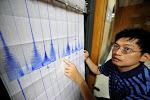
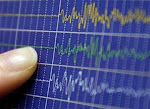
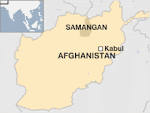






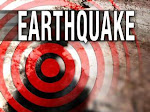
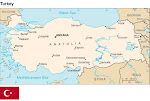
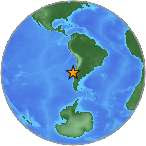




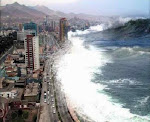

.jpg)


.bmp)



















 WELLINGTON, New Zealand - A magnitude 5.6 earthquake shook central New Zealand Thursday, rocking homes across a wide area, but there were no immediate reports of injury or damage, emergency services said.The quake hit at 8:15 a.m. Thursday and was located in the north of South Island, about 100 miles from the southern city of Christchurch, geological sciences agency, GNS Science, reported on its web site.It said the tremblor was "widely felt in South Island" and also lightly rocked the capital, Wellington and southern North Island.New Zealand sits above an area of the earth's crust where the Pacific and Australian tectonic plates are colliding and records more than 14,000 earthquakes a year — but only about 150 are felt by residents. Fewer than 10 a year do any damage.
WELLINGTON, New Zealand - A magnitude 5.6 earthquake shook central New Zealand Thursday, rocking homes across a wide area, but there were no immediate reports of injury or damage, emergency services said.The quake hit at 8:15 a.m. Thursday and was located in the north of South Island, about 100 miles from the southern city of Christchurch, geological sciences agency, GNS Science, reported on its web site.It said the tremblor was "widely felt in South Island" and also lightly rocked the capital, Wellington and southern North Island.New Zealand sits above an area of the earth's crust where the Pacific and Australian tectonic plates are colliding and records more than 14,000 earthquakes a year — but only about 150 are felt by residents. Fewer than 10 a year do any damage.







